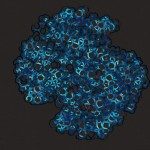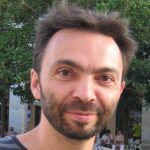Lien vers Pubmed [PMID] – 15733913
J. Mol. Biol. 2005 Mar;347(1):1-10
MalT, the dedicated transcriptional activator of the maltose regulon in Escherichia coli, is subject to multiple controls. Maltotriose, the inducer, promotes MalT self-association, a critical step in promoter binding, whereas three proteins acting as negative allosteric effectors (MalK, the ABC-component of the maltodextrin transporter, MalY, and Aes) antagonize maltotriose binding. All of these regulatory signals are integrated by a novel signal transduction module that comprises three out of the four MalT structural domains: DT1, the ATP-binding domain that contains determinants recognized by the negative effectors, DT2, and DT3, the maltotriose-binding domain. For a better insight into the role of DT3 in signal integration, we PCR mutagenized the DT3-encoding region and screened for gain of function mutations in a malK+ strain in the absence of repression by MalY or Aes. Most of the mutations isolated alter one of seven residues that are located in DT3 helices 10 and 11, or in the turn between them and delineate a surface-exposed motif. In vivo and in vitro analyses revealed that the substitutions altering the so-called H10/H11 motif do not affect the ability of MalT to activate transcription or its sensitivity to MalY and Aes, but dramatically decrease its sensitivity to MalK. We propose that MalT/MalK interaction might involve two distinct contact sites on each partner. These sites would be located in DT1 and DT3 of MalT, and in the nucleotide-binding domain and the regulatory domain of MalK. Such a two-point interaction model would explain how the regulatory activity of MalK might be coupled to transport.


